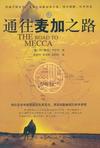中医基础知识
出版时间:2010-1 出版社:外文出版社 作者:印会河 编 页数:418
内容概要
This book systematically describes the
fundamental theories of Traditional Chinese Medicine(TCM). It
outline the basic concepts and theories of TCM, such as yin-yang,
the five elements, qi (vital energy), blood and body fluids,
pathogenesis, pathology, the four diagnostic techniques, the eight
guiding principles, differentiation of syndromes and general rules
of prevention and treatment.
书籍目录
Chapter Ⅰ GENERAL INTRODUCTION
Formation and development of the theoretical system of
TCM
The materialistic and dialectical outlook in the theoretical
system of]
Ⅰ.The materialistic outlook
Ⅱ.The dialectical outlook
Chief features of TCM
Ⅰ.The hol istic concept
Ⅱ.Bianzheng and lunzhi(planning treatment
according to diagnosis)
Chapter Ⅱ YIN AND YANG,HVE ELEMENTS(PHASES)
The yin—yang theory
Ⅰ.Chief contents of the yin—yang theory
Ⅱ.Application of the yin—yang theory
The five·element theory
Ⅰ.Chief contents of the five—element
theory
Ⅱ.Application of the five—element theory in
TCM
Chapter Ⅲ VISCERAL SYMPTOMS
The five yin viscera
Ⅰ.The heart
Ⅱ Thelung
Ⅲ.The spleen
Ⅳ.The liver
Ⅴ.The kidney
The six yang viscera
Ⅰ.The gallbladder
Ⅱ.The stomach
Ⅲ.The small intestine
Ⅳ.The large intestine
Ⅴ.The bladder
Ⅵ.The triple energizer
……
Chapter Ⅺ GENERALRULES OF PREVENTION AND TREATMENT
章节摘录
c. The spleen is concerned with muscles and the four extremities. Plain Questions states, "the spleen controls the muscles." This is because the spleen and stomach are the resource of qi and blood, and the muscles can be healthy only when nourished by the refined food which is transported and digested by the spleen and stomach. Hence, the strength of the muscles depends upon the transporting and digesting functions of the spleen and stomach and gastrosplenic dysfunction leads to thin, weak or even atrophic muscles. The transportation of the refined food to the four extremities depends upon the ascending and dispersing functions of pure yang qi. Therefore, if splenic qi is normal in transporting the nutrients, the muscles of the four extremities will move freely and energetically. If not, the muscles will lack nutrients, and lassitude, weakness and even atrophy may be seen. d. The spleen opens to the mouth and reflects on the lips. "The spleen opens to the mouth" means that diets and appetite, etc. are closely related to the transporting and digesting functions of the spleen. A normal appetite depends upon whether the normal splenic function of sending the purified material upward and the gastric function of sending the turbid material downward are normal or not. If the spleen and stomach transport food normally, the appetite will be normal. If not, a tasteless, sweet, mucoid, or bitter taste, etc. may appear. The colour of the mouth and lips indicates whether qi and blood are rich or not. As the spleen is the resource of qi and blood, whether the mouth and lips are red and moist is not only the reflection of the state of qi and blood in the body, butalso that of the spleen and stomach's transporting and digesting the refined food. Ⅳ. The liver The liver lies in the abdomen below the diaphragm in the right hypochondrium. It is the residence of the soul, storehouse of the blood and master of tendons. In the five-element theory it corresponds to wood and is concerned with the movement and predisposed to a flourishing growth. Its chief physiological functions are concerned with dispersing and discharging. The liver opens to the eyes, governs tendons and reflects on nails. It is closely related to anger and tears. As the Liver Meridian of Foot-jueyin and the Gallbladder Meridian of Foot-shaoyang are respectively connected with the liver and gallbladder, the liver and gallbladder are closely related. 1. Chief physiological functions of the liver a. The dispersing and discharging functions of the liver refer to the liver's predisposition to a flourishing growth and movement, which is an important link in regulating and unblocking the qi mechanism of the entire body and promoting blood circulahon and body fluids. They are chiefly: a) Regulating the qi mechanism that refers to the movement of qi, The movement of the viscera, meridians and organs of the body are based on the movements of qi. Since the liver is characterized by flourishing growth and movement, it is an important factor in qi movement. Hence, whether its dispersing and discharging functions are normal or not plays a regulating role in balancing and harmonizing the movement of qi. If these functions are normal, all qi activihes will be regulated. Qi and blood will be harmonious, the meridian will be unblocked, and the viscera and organs will funchon normally. If not, a pathological condition may occur. "VVhen the liver loses its dispersing and discharging functions, qi will fail to flourish and qi achvities will be blocked, forming pathological obstructions, and stagnant qi with local distension, pain and discomfort in the chest and hypochondria, breasts or lower abdomen. ……
图书封面
评论、评分、阅读与下载
用户评论 (总计2条)
- 帮一个学西医的留学生买的,据说内容很好。
- 很好,不错,优秀,好好
